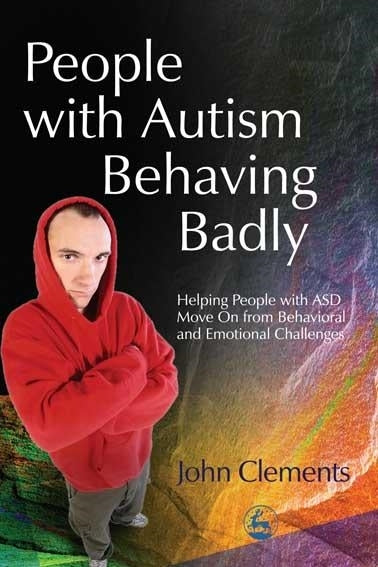
Press Reviews
www.youthinmind.net
This book could prove a valuable resource for families of children and adults on the autistic spectrum, as well as the professionals working on them.
www.youthinmind.net
People on the autistic spectrum can often display challenging behaviour that has a significant impact on them, their family members and the wider community. This book provides readers with ideas of how to reduce the frequency and severity of such behaviour. It emphasises using what is already known about what does and doesn't work for an individual to guide thinking around this, and a number of exercises are included to help readers focus on what they want to do, why and how.
Autism Awareness
This is a thorough and thoughtful book which is designed to be used as a workbook rather than as a shelf text. It even has two appendices filled with exercises and logs that parents and carers can fill out as they trial the various approaches they choose. As the author says when talking about his book "It offers no magic answers or quick fix solutions. It is about the little things that can be done in everyday life to make things better. It is about using the insights and skills that families have, and working away patiently in a spirit of optimism."
PsycCritiques
These chapters contain a wealth of information for family members about behavioural assessment and treatment, presented in accessible language. Constructing this kind of bridge from scientific literature to popular, self-help material is an unappreciated art, and Clements has done it capably.
Autism Matters
This is a great book for parents and professional alike, it offers long term practical strategies to deal with those behaviours which are so distressing for young people with asd and their families. Chapter one is entitled "read this chapter" - here every other chapter in the book is summarised enabling the reader to dip into the appropriate sections as required. Clements shows great empathy with families and gives case examples from his vast experience to illustrate each issue addressed. Having a child or young person in the family with challenging behaviours means that sometimes we get so wrapped up in surviving each day fire watching each situation, that we don't feel able to take a step back and look at where changes can be made. This book helps us to do just that. I would recommend that all families living with autism read it.
Book News
Writing primarily for families of individuals living within the autism spectrum, practitioner Clements gives practical ideas to help reduce the frequency and severity of those individual's undesired behaviours both in public and at home. Admitting that there are no magic answers, he advocates using what families have on their side naturally: optimism, insight, coping skills, and a unique understanding on the needs and behaviours of their family member. He describes how to pinpoint the problem, screen underlying causes, developing a systematic and consistent way of responding to the behaviours, getting into the specifics such as behavioural work, underlying issues, and medications. He includes worksheets and questions to research, learning logs, and a model for patient-doctor interactions.
Community Care
I would recommend this book to families who already know about autistic spectrum disorder, and who want to work towards overcoming difficulties relating to certain behaviours, writes Beth Billington. The language used is accessible and not too jargon-oriented, and the book is clearly laid out. I particularly like guidelines on how to use the book effectively, without having to read every page. The book is practically very useful, with suggestions for prioritising goals, practical ideas and case examples to illustrate concepts. The use of exercises and thinking points enables the reader to give it a go in the real world, in order to foster change. It explains why people with ASD may "behave badly", and each chapter outlines a theme explaining the reasons behind behaviours that, to "neurotypicals" (people not on the autistic spectrum) may seem inexplicable.
